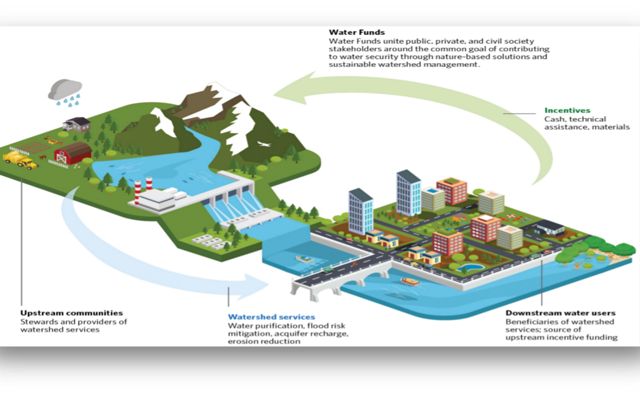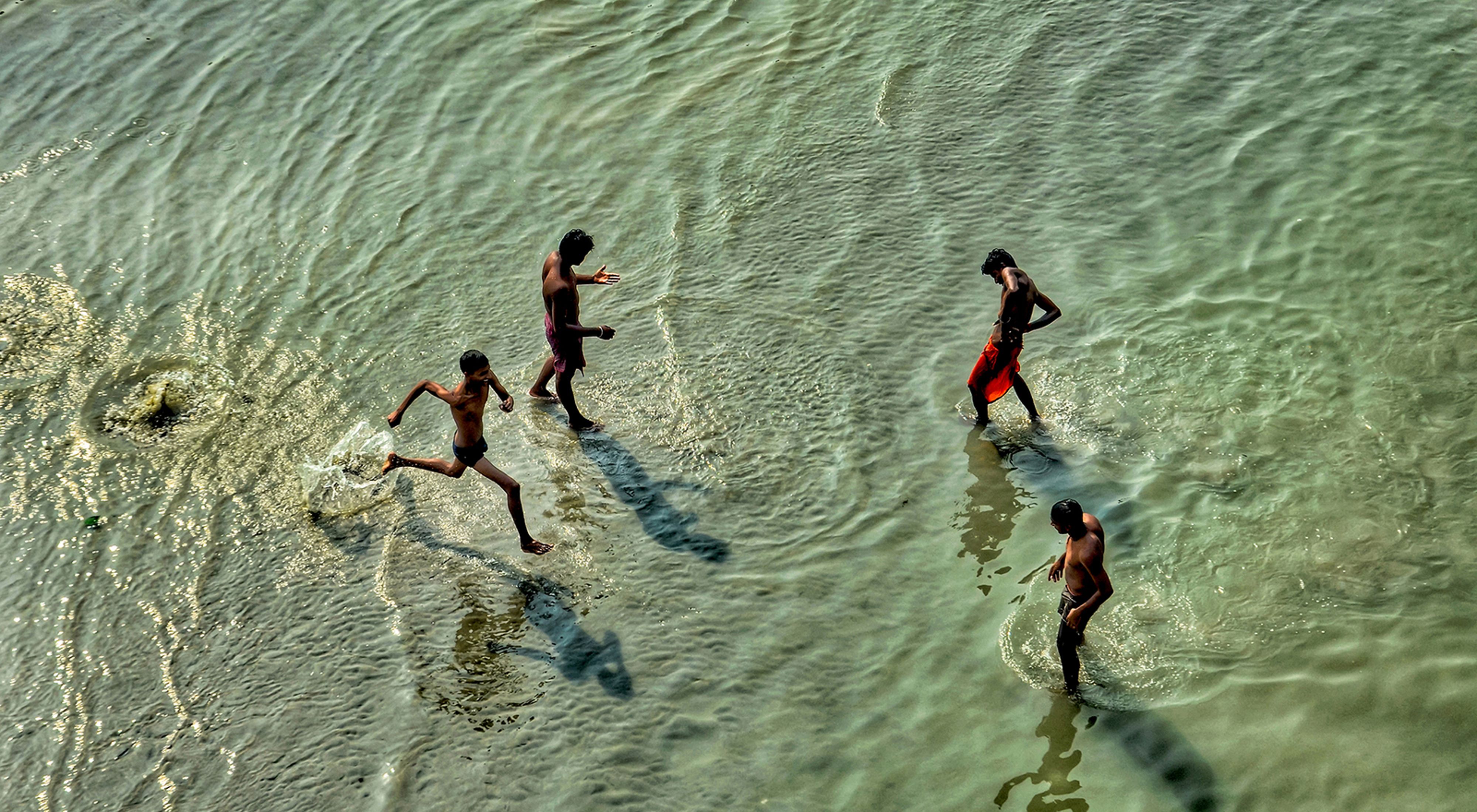India’s First Water Fund in Action: The Ghod River Water Fund
Supporting India's sustainable water management through innovative water solutions
Water scarcity is one of the biggest challenges facing our planet today. Data shows that only 0.3 percent of the Earth's water is fresh and available for human use.
India has 18 percent of the world’s population but only four percent of the world’s freshwater resources. Fourteen out of 20 river basins in India will be water-stressed by 2030 and over 600 million people will face severe water stress. Water scarcity is a reality that needs innovative solutions that ensure water availability equitably and sustainably through managing the nested drivers that affect a watershed at a basin scale.
To address the challenge of water scarcity, using a science-based approach, The Nature Conservancy has identified the Ghod River Basin in western Maharashtra to implement an innovative concept of a Water Fund which is a governance and finance mechanism through collective action.
Pollution in Ghod River: An Environmental Challenge
The Ghod River in Maharashtra is a tributary of the upper Bhima River. Originating in the biodiversity hotspot of the Western Ghats, it lies in the north-western part of the Krishna River basin, covering a part of Pune and Ahmednagar districts of the state. The river is extremely crucial for the region as it is the main source of water for close to 4.5 million and supports a thriving ecosystem. However, the river is under threat from pollution, climate change, and unsustainable usage.
The basin includes:
- Two districts (Pune & Ahmednagar)
- Five tehsils
- 472 villages
- Four towns (Junnar, Shirur, Shrigonda, and Manchar)
- 4,574 km2 of catchment area
- 3,042 km2 of agricultural area
- 350+ small and medium industries
The Ghod River basin is currently showing alarming signs of degradation due to pollution from non-point sources specifically agricultural runoff, which increases nutrient load in water bodies and causes eutrophication. This process affects dissolved oxygen concentrations and poses a threat to aquatic life.
Moreover, sub-optimal agricultural practices and drainage from irrigated land have led to waterlogging and increased soil salinity due to the accumulation of fertilizers and pesticides used in agriculture. Deforestation, changes in land-use patterns, and landslides have caused sediment production to increase in upstream areas, leading to sediment accumulation in the reservoirs of the Ghod River basin. This results in a reduced storage capacity, which is detrimental to the river system's overall health.
Restoring The Balance: A Step to Make Things Right
To address these challenges, The Nature Conservancy with the support of Cummins Foundation has initiated a project titled “Catalyzing Collective Action for Water Security in Maharashtra” under which it is proposed to establish the Ghod River Water Fund to showcase a pragmatic, long-term solution that improves lives, provides water security and thus enabling prosperity of the local communities.
Water Funds are organizations that design and enhance financial and governance mechanisms that unite public, private, and civil society stakeholders around a common goal to contribute to water security through nature-based solutions and sustainable watershed management. Water funds provide a way for governments, philanthropic organizations, and private investors to invest in the conservation and protection of vital water resources.
Water funds are a relatively new concept, but they have been implemented in multiple countries with varying degrees of success. Each fund is unique in its approach, with different funds focusing on different goals such as improving water quality, providing access to safe drinking water, reforestation, habitat restoration, watershed management, and irrigation.

Innovative Solutions for a Sustainable Water Future
The GRWF Project is a ground-breaking initiative that aims to secure a sustainable future for the Ghod River and the communities that rely on it. The Nature Conservancy India Solution (NCIS)and its partners are working towards building a world where people and nature can thrive together, thus making this Project a pivotal NCIS initiative.
To tackle the water security challenges in the Ghod River Basin through collective action of the key stakeholders, the proposed GRWF aims to achieve the following:
- Enhance biodiversity;
- Support sustainable agriculture practices - Developing water-efficient agriculture: Trainings are provided to farmers to adopt sustainable agricultural practices that conserve water;
- Develop a sustainable model that can be replicated across regions;
- To establish a network of Partners to enable and promote nature-based solutions for water resilience to improve water availability for local communities;
- To form a citizen scientist coalition including farming and tribal communities supporting stewardship of the basin;
- To strengthen community knowledge on water use efficiency and ensure equitable access to all and develop local capacity to manage operations of the GRWF and to ensure equitable access to water;
- Restoring natural ecosystems: Local communities are crucial and involved in restoring degraded forests, grasslands, and wetlands. These ecosystems play a crucial role in regulating the water cycle, improving soil health, and supporting biodiversity;
- Recharging groundwater: Communities build and maintain structures that help recharge groundwater. This helps increase water availability during dry periods and droughts.
Several co-benefits of water funds cannot be ignored. For example, projects like GRWF can help in better forest protection and management, replanting, smart agriculture, and improving overall water quality. Working with local communities the project aims to develop a deep understanding of the value of natural resources and the importance of conserving them for all its stakeholders.
Quote: Girija Godbole
With its vision of a sustainable future, we remain committed to building a world where people and nature can thrive together. We want to encourage and support stewardship of the basin through citizen science initiatives.
Take Action on Water Conservation
Join us in protecting and preserving the biodiversity of the Ghod region! By supporting The Nature Conservancy India's Ghod Water Project, you can help ensure a sustainable future for the people and wildlife that depend on this vital water source.
- Volunteer: Join our team of citizen scientists and help us monitor the health of the Ghod watershed. Whether you're a seasoned environmentalist or just starting out, there's a role for you to play.
- Spread the word: Share our message with your friends, family, and social networks. The more people who know about our work, the more impact we can have.
Together, we can make a lasting impact on the environment and ensure a sustainable future for generations to come.
We offer our heartfelt gratitude to our partner Cummins.

